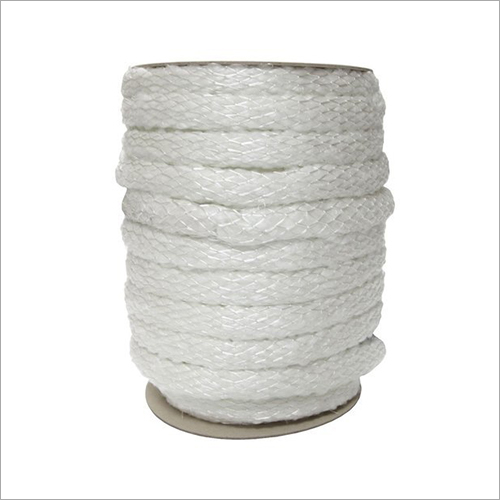Call : 08071630245

Asbestos Round Rope
Product Details:
- Material Cotton
- Type Rope
- Texture Plain
- Application Industrial
- Length 25 Millimeter (mm)
- Color White
- Shape Round
- Click to View more
X
Asbestos Round Rope Price And Quantity
- 10 Meter
Asbestos Round Rope Product Specifications
- Cotton
- Industrial
- Rope
- Plain
- 25 Millimeter (mm)
- Round
- White
Asbestos Round Rope Trade Information
- Cash in Advance (CID)
- 100 Meter Per Week
- 2-3 Days
- All India
Product Description
Asbestos Round Rope is a type of sealing and insulation material that was commonly used in various industries due to its heat-resistant properties. It is made from asbestos fibers woven or twisted into a round rope form. This rope was often used in applications such as sealing furnace doors, boilers, pipes, and other high-temperature environments where heat insulation and sealing were required. However, it is important to note that the use of asbestos has been phased out due to its health risks, and safer alternatives are now recommended.
FAQ:
Q: What is Asbestos Round Rope?
A: Asbestos Round Rope is a type of rope made from asbestos fibers. It was used in various industries for applications requiring heat insulation and sealing, such as sealing furnace doors, boilers, pipes, and other high-temperature environments.
Q: Why was Asbestos Round Rope used?
A: Asbestos Round Rope was used due to its excellent heat resistance and sealing properties. It could withstand high temperatures and effectively seal gaps or joints, preventing heat loss or leakage in industrial settings. It was also known for its durability and flexibility.
Q: Is Asbestos Round Rope safe to use?
A: No, Asbestos Round Rope is not safe to use. Asbestos fibers are associated with severe health risks, including lung diseases such as mesothelioma and asbestosis. Due to these health hazards, the use of asbestos has been strictly regulated or banned in many countries.
Q: What are the health risks associated with Asbestos Round Rope?
A: Asbestos fibers, when inhaled or ingested, can cause serious health issues. Prolonged exposure to asbestos fibers can lead to lung diseases such as mesothelioma, asbestosis, and lung cancer. These diseases may take several years or even decades to develop after exposure.
Q: Is there a safer alternative to Asbestos Round Rope?
A: Yes, safer alternatives to Asbestos Round Rope are available. Many modern sealing and insulation materials have been developed to provide similar heat-resistant properties without the health risks associated with asbestos. It is recommended to use these safer alternatives in all applications to protect both human health and the environment.
Tell us about your requirement

Price:
Quantity
Select Unit
- 50
- 100
- 200
- 250
- 500
- 1000+
Additional detail
Mobile number
Email
Other Products in 'Asbestos Rope' category
 |
P. P. INTERNATIONAL
All Rights Reserved.(Terms of Use) Developed and Managed by Infocom Network Private Limited. |

 Send Inquiry
Send Inquiry


